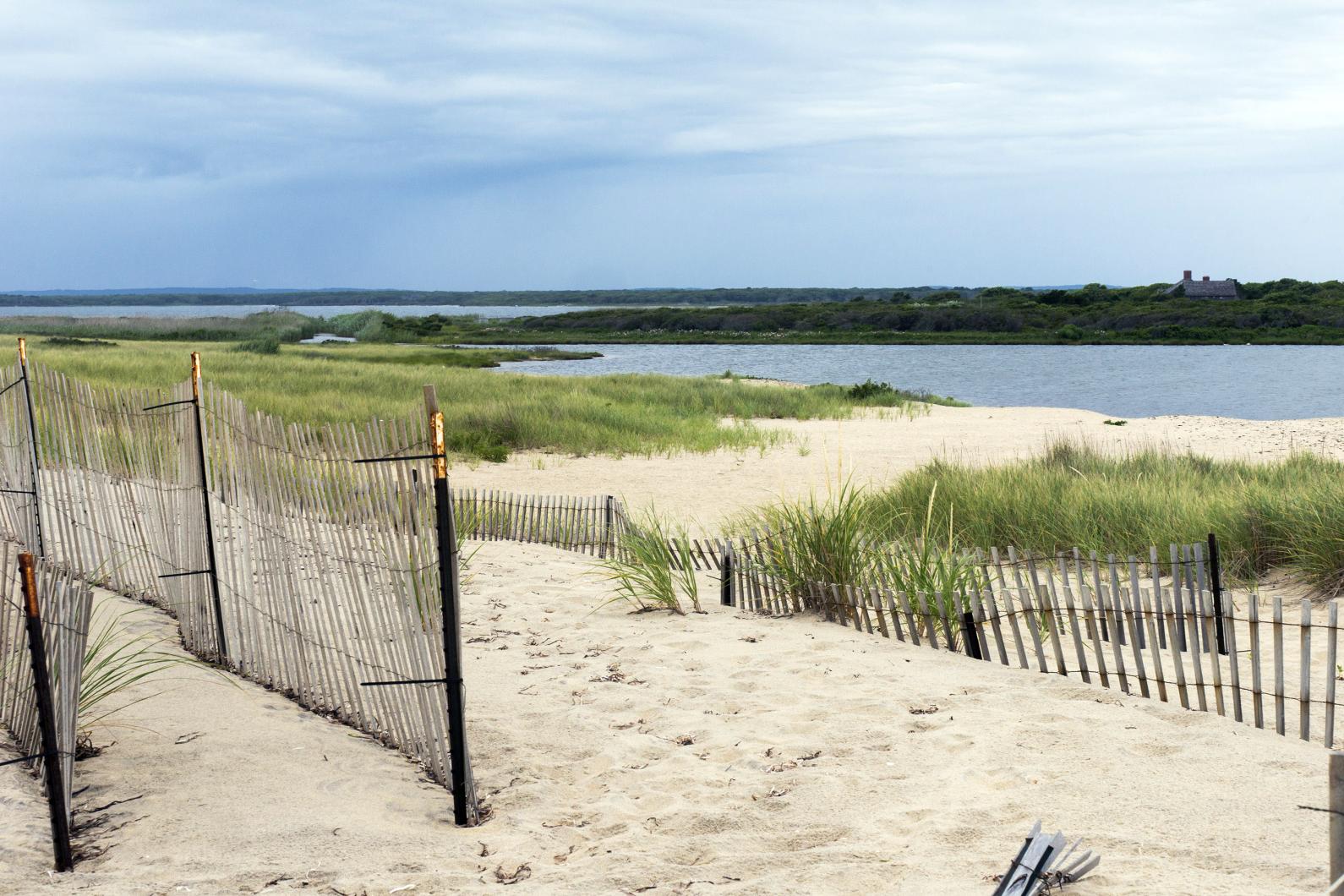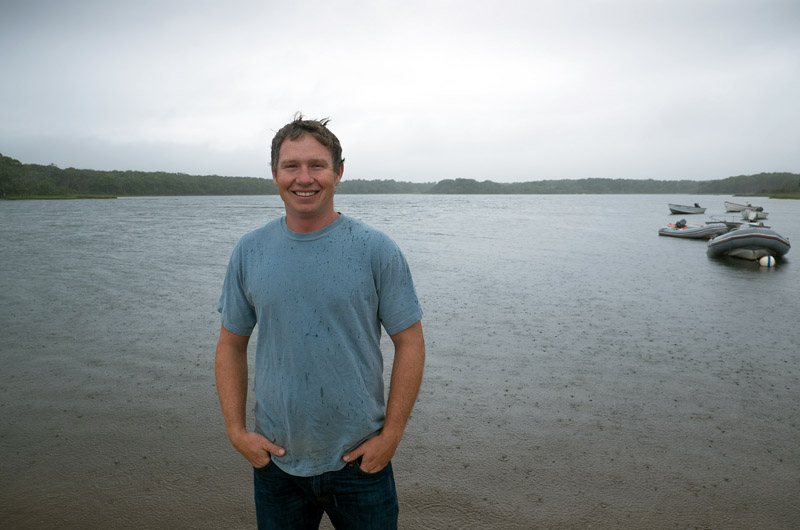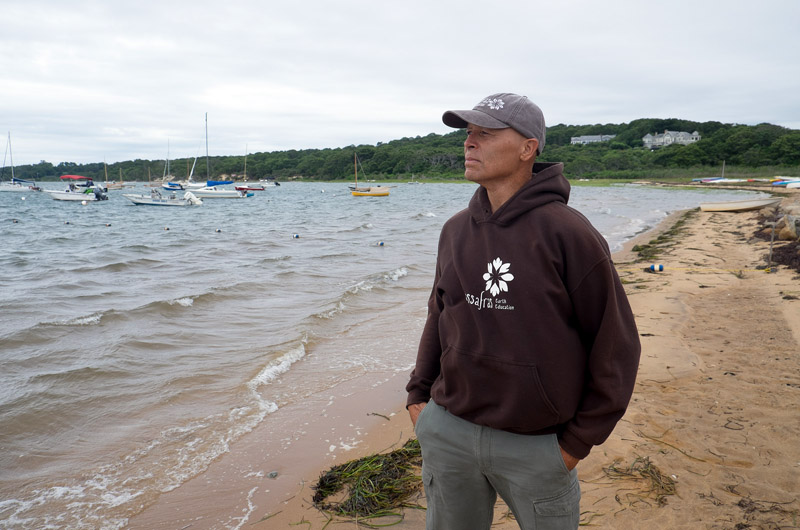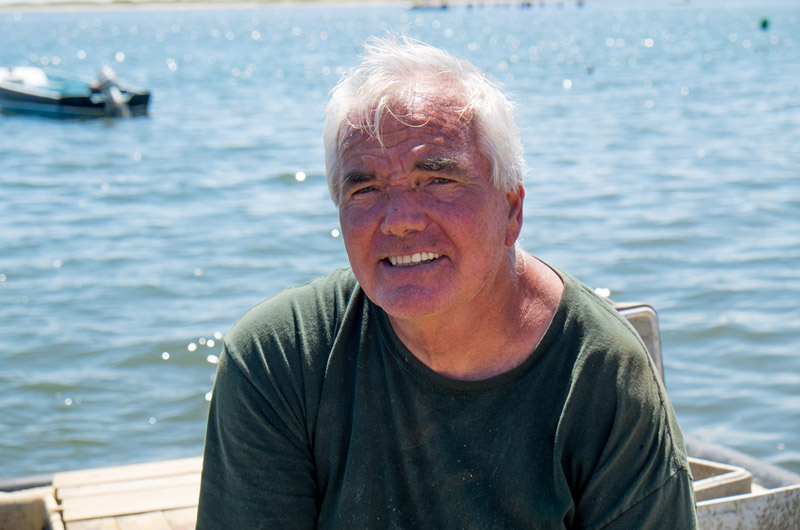The Vineyard is perhaps known best for its Atlantic waters; after all, it is the ocean that makes the Vineyard an Island.
But Vineyarders also have deep ties to the ponds that were carved into the Island landscape some 20,000 years ago.
As long as the ponds have existed, Islanders have lived off the fruits of these calmer waters.
“They have been a great source of food for as long as the Island has been an Island,” conservationist Tom Chase said.
Archeological sites along the ponds’ edges indicate that the native people were harvesting shellfish, eels, and herring from the coastal ponds for thousands of years. Shell middens, piles of artifacts that often contain shellfish debris, have been located in many coastal locations across the Island. Up-Island, some early Wampanoags are thought to have settled along the shores of Menemsha Pond, close to their food source and to arable soil for farming.
“Going many generations back, our ancestors took part in harvesting the resources from this pond,” said David Vanderhoop, a descendant of those early pond-dwellers. “The lineage of this pond goes back thousands of years.”
His father, the late William D. Vanderhoop, was the last person to make his living year-round on the 665-acre pond that straddles the Aquinnah-Chilmark town line.
A four-season fisherman, he harvested scallops, clams and fish from the pond.
David grew up digging quahaugs, catching crabs and foraging for berries and beach plums along the shore of Menemsha Pond.
“It’s been an incredible resource for me and my family since I was a young boy,” he said. When his dad didn’t land enough scallops at the end of the season, they’d hunt for rabbit, venison, squirrels, ducks and geese near the pond.
“If we couldn’t afford to buy anything else, he could afford a box of shotgun shells, and we’d hunt so that there would be food on the table,” Mr. Vanderhoop said. “We’d always have something to eat from the land.”
After graduating from college, Mr. Vanderhoop returned home to a job at a small shellfish hatchery on the pond.
In the off-season, he scalloped alongside his friends and family.
In those days, the pond would freeze over solid in the wintertime, and he’d cut holes in the ice and plunge his bull rake down to collect quahaugs. Between 1999 and 2006, he and his brother Matthew ran the Wampanoag Aquinnah shellfish hatchery.
To this day, the pond continues to provide for David Vanderhoop and family, though not on a year-round basis. (He also works as a carpenter and runs an earth education school with his wife, Saskia.) In addition to scalloping during the productive seasons, often he will hunt on those same Wampanoag tribal lands that abut Menemsha Pond.
“This was native land that never left our hands,” he said. “This was one of the resources, along with the pond, that has always belonged to the Wampanoag tribal people. It has been a resource for us for living.”
Menemsha Pond, along with others in Aquinnah, still provide sustenance for tribal families. And local artists create wampum jewelry and other items from the purple and white quahaug shells.
“It’s kind of like wearing your DNA,” said Bettina Washington, director of cultural resource protection for the tribe. “Your identity is contained in that.”
But over the years, the pond has filled up with sport-fishing boats and dozens of houses built near the shoreline.
The changes Mr. Vanderhoop has observed are characteristic of the Island’s coastal ponds, which saw accelerated development during the housing boom that began on the Vineyard in the early 1970s. In the case of Menemsha Pond, the waters have remained pristine. Eelgrass, a marine plant that grows in clean salt water is present and in good condition in the pond.
“The water is so clear you can see to the bottom,” Ms. Washington said. “Even if you are out in the middle of the pond you can see right down.”
Elsewhere, the situation is not so good. Homes have crowded along the banks of the Vineyard’s coastal ponds, and nitrogen seeping from their septic systems is polluting the water.
That’s the story at Lagoon Pond, where lifelong Oak Bluffs resident William Alwardt cast his first fishing line into clear waters brimming with pond life in the 1950s and early 1960s. “You could look out your bedroom window and see the herring and striped bass,” he said. “I would run down and catch striped bass and sell them. At an early age, that’s what I wanted to do, to fish.”
When he was 20 years old, Mr. Alwardt began bay scalloping in Lagoon Pond. At the time, there were 100 boats actively fishing in the pond. But in the decades since, that number has fallen to 25. Mr. Alwardt is deeply concerned about the shift away from what he considers a traditional way of life. He says it’s become harder and harder to make a decent living as a fisherman, even as prices for scallops have skyrocketed.
“The whole situation is sad,” he said. “I base the health of the pond on our bay scallop fishery, and from year to year, we don’t know if we are going to have a fishery.”
Scallops may fetch the highest prices at market, but oysters, quahaugs and softshell clams also contribute to the Island’s commercial fishing industry.
Edgartown, at least, provides some reasons to be hopeful about the Island’s oyster farming industry.
Katama Bay is so healthy, in fact, that one of the biggest challenges for oyster farmers are the abundance of sponges, anomiids (jingle shells), slipper snails and other species that attach to the oysters.
“Competing with those type of things is probably my biggest challenge,” said Jeremy Scheffer, a young farmer who learned about the business from his father, Roy, owner of Roysters, also on Katama Bay. Mr. Scheffer now runs his own farm, Spear Point Oysters. “I’ve been fortunate enough to have my father teach me everything he knows,” Mr. Scheffer said on a recent rain-soaked summer day. “My dad and Jack Blake, and Scott Castro and Tracy Sharples, they were kind of the pioneers of doing oyster farming down there.”
Despite the relative bounty, he said, the inconsistency of spawning rates over time have contributed to the need for fishermen to expand into other areas.
The Island’s commercial fishing industry in general has struggled since the 1990s, as government regulations have increased in response to an alarming decline in fish populations.
Before then, no one was oyster farming in Katama Bay, said Mr. Blake. “Everyone was making enough money commercial fishing.”
About 10 years after he began growing his now signature Sweet Neck oysters in the late 1990s, others became interested and the small industry expanded. The remaining few oyster farm pioneers now share the bay with a younger generation of 20 and 30-year-olds, including Mr. Scheffer.
Mr. Scheffer hopes that a mix of aquaculture and other types of fishing can help sustain the Island fishing industry as whole. “Honestly, I feel like there just isn’t enough of either to have people realize that this is a huge part of the identity of Martha’s Vineyard,” he said.
Although Mr. Blake could conceivably increase his annual harvest, he aims to hold steady at about 200,000 oysters. But others continue to invest in new gear and increase their yields.
In 2014, oyster farms in Edgartown generated about $1.7 million, according to the town’s annual shellfish report. Ten years earlier, the figure was $162,500.
“For the most part there are more and more oysters coming out of Katama Bay,” said Mr. Blake. But that may not reflect the bigger picture. As with many Island fisheries, bay scallop yields have declined drastically since the 1970s.
Many people point to nitrogen and the resulting algae blooms as a major cause.
In a 2012 study published by the Massachusetts Estuaries Project, Lagoon Pond was declared impaired due to high levels of nitrogen contamination. The largest source of the nitrogen was found to come from septic systems, according to the report. Among other recommendations, the authors of the study advised the town to sewer houses within the watershed.
But Mr. Alwardt, who still lives on the pond and has become active politically, says so far, it’s been all talk and no action.
“They have done all the studies, they have listened to all the reports, and they still haven’t sewered one house,” he said.
Just as humans can mess up the ecological balance of the ponds, Mr. Alwardt said they also have the capability to improve pond health.
In his view, human intervention means sewering, no matter the cost.
“It’s the only solution,” he said. “Without it, we are definitely going to lose the pond.”
This is the second in a series.











Comments
Comment policy »